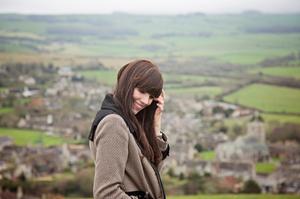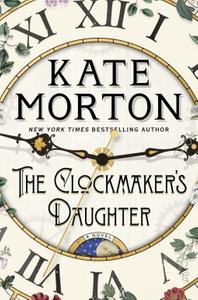
|
|
| photo: Davin Patterson | |
What was your inspiration for The Clockmaker's Daughter?
A book is thousands of ideas woven together, but in the beginning it takes only a few threads to form the kernel of the story. In the case of The Clockmaker's Daughter, these included a chance meeting with an archivist; a longstanding fascination with Victorian London; the discovery of certain unique aspects of Harvington Hall in Worcestershire; a lifelong love of art and photography; an abiding obsession with houses and their hidden stories; and my deep affection for the beautiful countryside along the banks of the Upper Thames.
Your novels often move back and forth between different eras and characters, but this book's narrative style is a bit more complicated than usual. How do you accomplish that?
My novels always contain an historical element, but what interests me more than history itself is the way the past and the present remain tethered. From the outset, I was eager to write a novel in which various narratives, taking place in different time periods, unfolded as seemingly discrete--but ultimately linked--storylines. This additional complexity meant that I had to alter my drafting approach: for the first time, I didn't write the book's chapters in the same order that the reader discovers them. Instead, I worked on all of the historical storylines at the same time, dipping from one to the other and then back again.
Time is a central theme in the book: not simply clocks and clockmaking, but the passage of time, the different lives led in one house over many years, the notion of what human beings do with their time. Can you speak to that?
Time, in particular its passage, is one of my favorite themes and I am always seeking new ways to explore it. I'm sure that having a mother who was an antique dealer shaped me in this respect. For as long as I can remember I've been aware of the way time passes; even more so, of the way objects pass through time. I used to love drifting through Mum's shop picking up this bonbonniere or that brooch, trying on a velvet fedora or a pair of fine kid gloves, and wondering at the people and places that they'd known before me.
 Birchwood Manor, the house where much of the book is set, is almost a character itself. You've featured this sort of grand, mysterious house in several of your books. Was it inspired by a real house, and/or a combination of different places?
Birchwood Manor, the house where much of the book is set, is almost a character itself. You've featured this sort of grand, mysterious house in several of your books. Was it inspired by a real house, and/or a combination of different places?I adore houses: I love them architecturally and aesthetically--floor plans, proportions and living spaces, rooflines and materials--but I also value and respect them as places where human beings lead their lives; repositories of memories. I was inspired by a number of real houses when I was writing The Clockmaker's Daughter, including the early 16th-century Avebury Manor (which gives an incredible sense of the layers of time, sitting, as it does, within a group of Neolithic stone circles) and Kelmscott Manor, the one-time country home of William Morris (and his wife, Jane, and friend Dante Gabriel Rossetti). Both houses are now open as museums and Kelmscott is still furnished with Morris's possessions. Harvington Hall in Worcestershire was also an inspiration: it is Elizabethan and possesses seven priest holes.
Each of the book's different eras has a main character: a schoolgirl, a modern-day archivist, several writers, an artist's model….
I believe that fictional life should be as multi-faceted and layered as real life, and in The Clockmaker's Daughter, a book that explores the passage of time in a single location, it seemed inevitable that the central story should be told by different voices. I love that we hear from so many characters who call Birchwood Manor home over the century, and whose lives intersect across time to reveal the answer to the mystery at the novel's heart.
While not a traditional mystery, the book deals throughout with secrets: at least one character conceals her identity, and there are questions surrounding the deaths and disappearance of several other characters. There's also a lost diamond and a lost painting. Are you a mystery fan?
I grew up reading mystery stories after discovering Enid Blyton's The Famous Five when I was six years old, and I love writing about secrets, especially the way they tend to haunt their keepers. For me, an essential part of being a storyteller is making a connection, and one of my favorite aspects of writing is the sense that I am playing a game with readers, concealing the answer to a central mystery in scenes that appear to be about something else entirely. --Katie Noah Gibson, blogger at Cakes, Tea and Dreams

